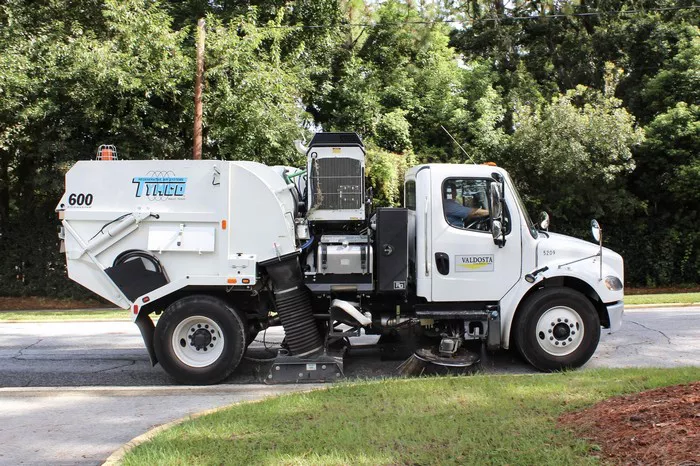Bobcat sweepers are a vital tool in the arsenal of construction, landscaping, and municipal maintenance professionals. These machines are renowned for their efficiency and durability, allowing users to keep their work sites clean and safe. A critical component of the Bobcat sweeper’s functionality is its brushes. The number of brushes on a Bobcat sweeper can vary significantly depending on several factors. In this article, we will explore the details behind the number of brushes on different models of Bobcat sweepers and what users should consider when choosing the right sweeper for their needs.
Variable Brush Count
The brush count on a Bobcat sweeper is not a one-size-fits-all figure. Bobcat offers sweepers in various sizes, and each size accommodates a different number of brushes. The most common broom sizes are 44 inches, 48 inches, and 72 inches. Each of these sizes is designed to handle different cleaning tasks, from smaller, more confined areas to larger, more open spaces. The size of the broom directly affects the number of brushes it can hold, impacting the machine’s sweeping efficiency and coverage area.
See also: A Comprehensive Guide: Do Manual Sweepers Work?
Common Sizes
44-inch Brooms: The 44-inch brooms are typically used for more compact areas where maneuverability is crucial. They are perfect for cleaning sidewalks, small parking lots, and other areas where space is limited.
48-inch Brooms: The 48-inch brooms strike a balance between size and efficiency. They are versatile enough for both smaller and moderately sized areas, making them a popular choice for a variety of applications.
72-inch Brooms: The largest of the three, the 72-inch brooms, are designed for extensive areas such as large parking lots, streets, and construction sites. These brooms provide maximum coverage, reducing the time required to clean large areas.
Brush Type Matters
In addition to broom size, the type of brush used in a Bobcat sweeper plays a significant role in determining the number of brushes. Bobcat offers two main types of brushes: flat and convoluted. Each type has its unique characteristics and advantages, which can affect the total number of brushes needed.
Flat Brushes
Flat brushes are the traditional type used in many sweeping applications. They are straightforward in design and effective in a variety of conditions. Flat brushes are generally used when a robust, consistent sweeping action is required.
Convoluted Brushes
Convoluted brushes, on the other hand, feature a wave-like design that increases the surface area and improves debris pick-up. These brushes are particularly effective in environments where fine dust and smaller particles need to be collected. The convoluted design allows for better airflow and enhanced cleaning efficiency.
Specific Examples
To provide a clearer understanding, let’s look at some specific examples of how the number of brushes can vary in different models of Bobcat sweepers.
44-inch Bobcat Sweeper
For the 44-inch Bobcat sweeper, the number of brushes depends on the type chosen:
1. Flat Brushes: This model typically comes with 26 flat brushes. The flat design allows for robust debris collection and is suitable for a variety of sweeping tasks.
2. Convoluted Brushes: When equipped with convoluted brushes, the 44-inch sweeper usually has 22 brushes. The reduced number compared to flat brushes is offset by the increased efficiency and surface contact provided by the convoluted design.
48-inch Bobcat Sweeper
The 48-inch sweeper offers a balance between size and brush count:
1. Flat Brushes: A 48-inch sweeper generally includes 28 flat brushes. This configuration provides a solid performance for medium-sized areas, ensuring a thorough clean.
2. Convoluted Brushes: With convoluted brushes, the 48-inch model typically has 24 brushes. The convoluted design ensures that even with fewer brushes, the sweeper maintains high efficiency and effectiveness.
See also: How Was the Carpet Sweeper Invented: Carpet Sweeper History
72-inch Bobcat Sweeper
The largest model, the 72-inch sweeper, is designed for maximum coverage:
1. Flat Brushes: This model comes equipped with 42 flat brushes, offering extensive debris collection capabilities suitable for large, open areas.
2. Convoluted Brushes: When using convoluted brushes, the 72-inch sweeper generally has 36 brushes. The design ensures that the large surface area is effectively covered, even with fewer brushes than the flat brush configuration.
In Conclusion
The number of brushes on a Bobcat sweeper is influenced by both the broom size and the type of brush used. Here’s a quick summary:
1. 44-inch sweeper: 26 flat brushes or 22 convoluted brushes.
2. 48-inch sweeper: 28 flat brushes or 24 convoluted brushes.
3. 72-inch sweeper: 42 flat brushes or 36 convoluted brushes.
Choosing the right Bobcat sweeper involves considering the specific requirements of your cleaning tasks. For smaller, more confined areas, a 44-inch sweeper with either flat or convoluted brushes may be sufficient. For versatile applications, the 48-inch sweeper offers a good balance. For large, open spaces, the 72-inch sweeper with its higher brush count provides maximum efficiency.
It is always advisable to consult your Bobcat sweeper manual or speak with a Bobcat dealer to ensure you have the exact number of brushes and the right type for your specific model and cleaning needs. Understanding these details can help you maximize the performance and lifespan of your Bobcat sweeper, ensuring that your work sites remain clean and well-maintained.

